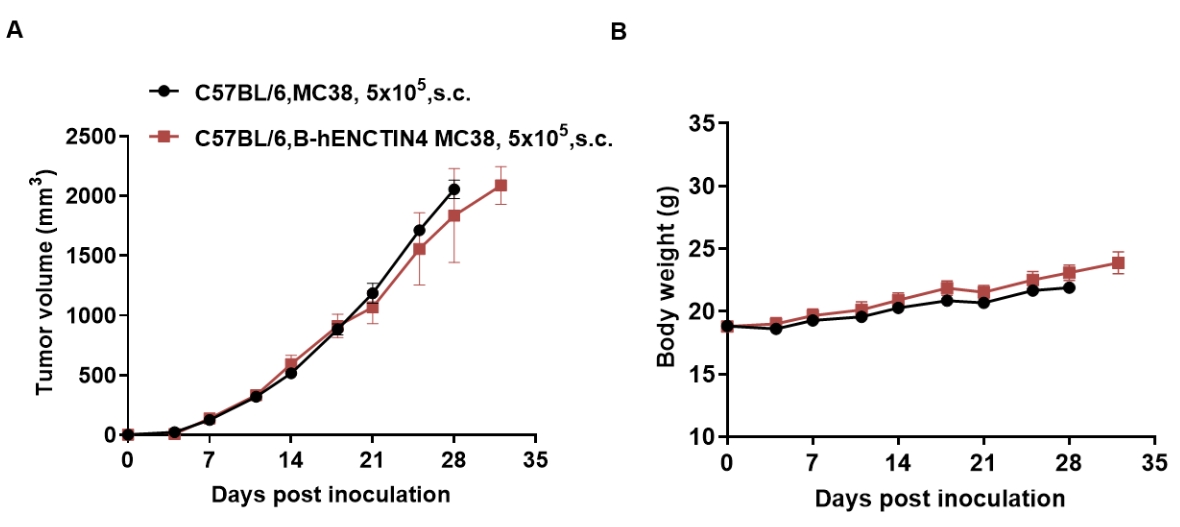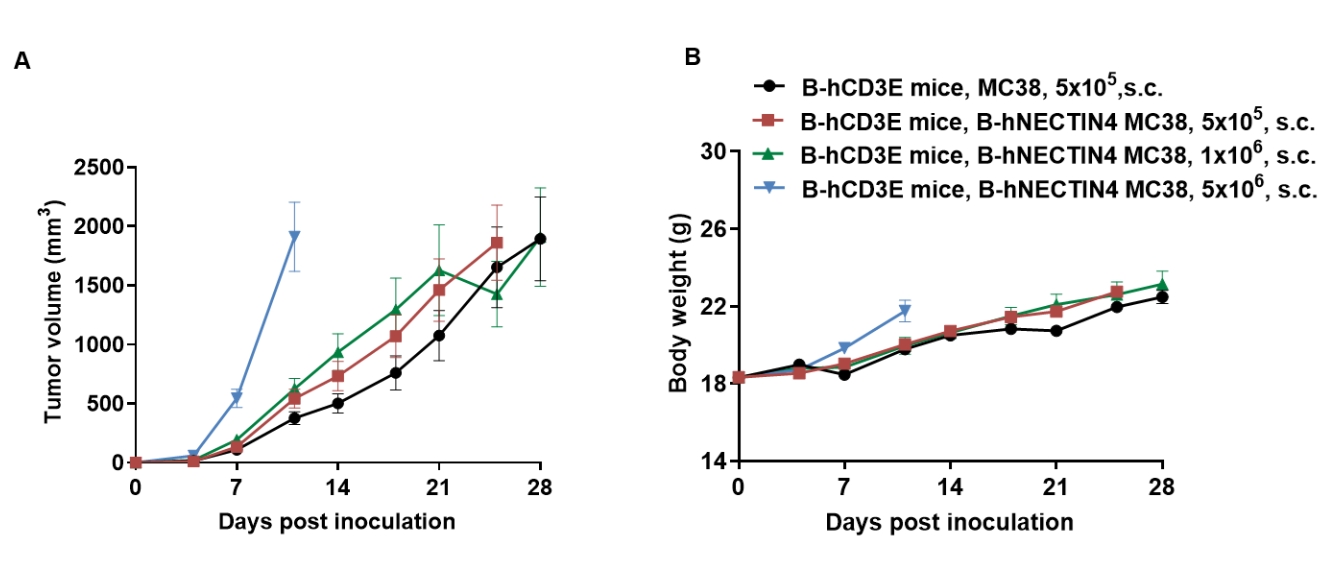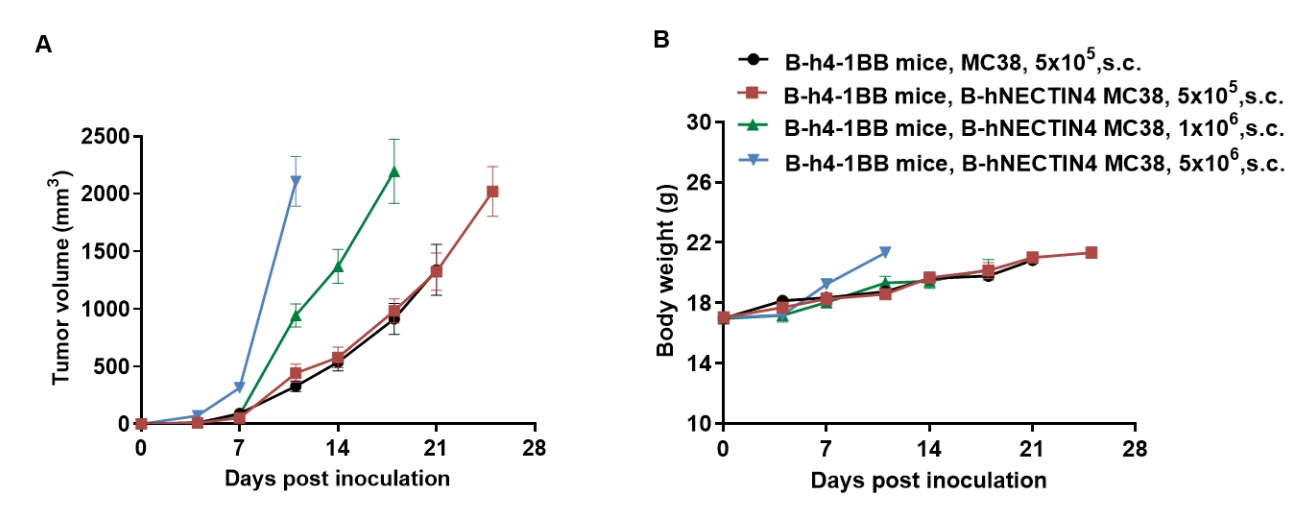Basic Information
-
Targeting strategy

-
Gene targeting strategy for B-hNECTIN4 MC38 cells. The exogenous promoter and human NECTIN4 coding sequence was inserted to replace part of murine exon 2. The insertion disrupts the endogenous murine Nectin4 gene, resulting in a non-functional transcript.
-
Protein expression analysis

-

NECTIN4 expression analysis in B-hNECTIN4 MC38 cells by flow cytometry. Single cell suspensions from B-hNECTIN4 MC38 cultures were stained with species-specific anti-NECTIN4 antibody. Human NECTIN4 was detected on the surface of B-hNECTIN4 MC38 cells but not wild-type MC38 cells. The 3-H03 clone of B-hNECTIN4 MC38 cells was used for in vivo experiments.
-
Tumor growth curve & Body weight changes

-

Subcutaneous homograft tumor growth of B-hNECTIN4 MC38 cells. B-hNECTIN4 MC38 cells (5×105) and wild-type MC38 cells (5×105) were subcutaneously implanted into C57BL/6 mice (female, 7-week-old, n=5). Tumor volume and body weight were measured twice a week. (A) Average tumor volume ± SEM. (B) Body weight (Mean± SEM). Volume was expressed in mm3 using the formula: V=0.5 X long diameter X short diameter2. As shown in panel A, B-hNECTIN4 MC38 cells were able to establish tumors in vivo and can be used for efficacy studies.

Subcutaneous homograft tumor growth of B-hNECTIN4 MC38 cells. B-hNECTIN4 MC38 cells (5×105, 1×106, 5×106) and wild-type MC38 cells (5×105) were subcutaneously implanted into B-hCD3E mice (female, 7-week-old). Tumor volume and body weight were measured twice a week. (A) Average tumor volume ± SEM. (B) Body weight (Mean± SEM). Volume was expressed in mm3 using the formula: V=0.5 X long diameter X short diameter2. As shown in panel A, B-hNECTIN4 MC38 cells were able to establish tumors in vivo and can be used for efficacy studies.

Subcutaneous homograft tumor growth of B-hNECTIN4 MC38 cells. B-hNECTIN4 MC38 cells and wild-type MC38 cells were subcutaneously implanted into B-h4-1BB mice (female, 7-week-old, n=6). Tumor volume and body weight were measured twice a week. (A) Average tumor volume. (B) Body weight. Volume was expressed in mm3 using the formula: V=0.5 X long diameter X short diameter2. As shown in panel A, B-hNECTIN4 MC38 cells were able to establish tumors in vivo and can be used for efficacy studies. Values are expressed as mean ± SEM.
-
Protein expression analysis of tumor cells

-

B-hNECTIN4 MC38 cells were subcutaneously transplanted into C57BL/6 mice (n=5). At the end of the experiment, tumor cells were harvested and assessed for human NECTIN4 expression by flow cytometry. As shown, human NECTIN4 was highly expressed on the surface of tumor cells. Therefore, B-hNECTIN4 MC38 cells can be used for in vivo efficacy studies of novel NECTIN4 therapeutics.


